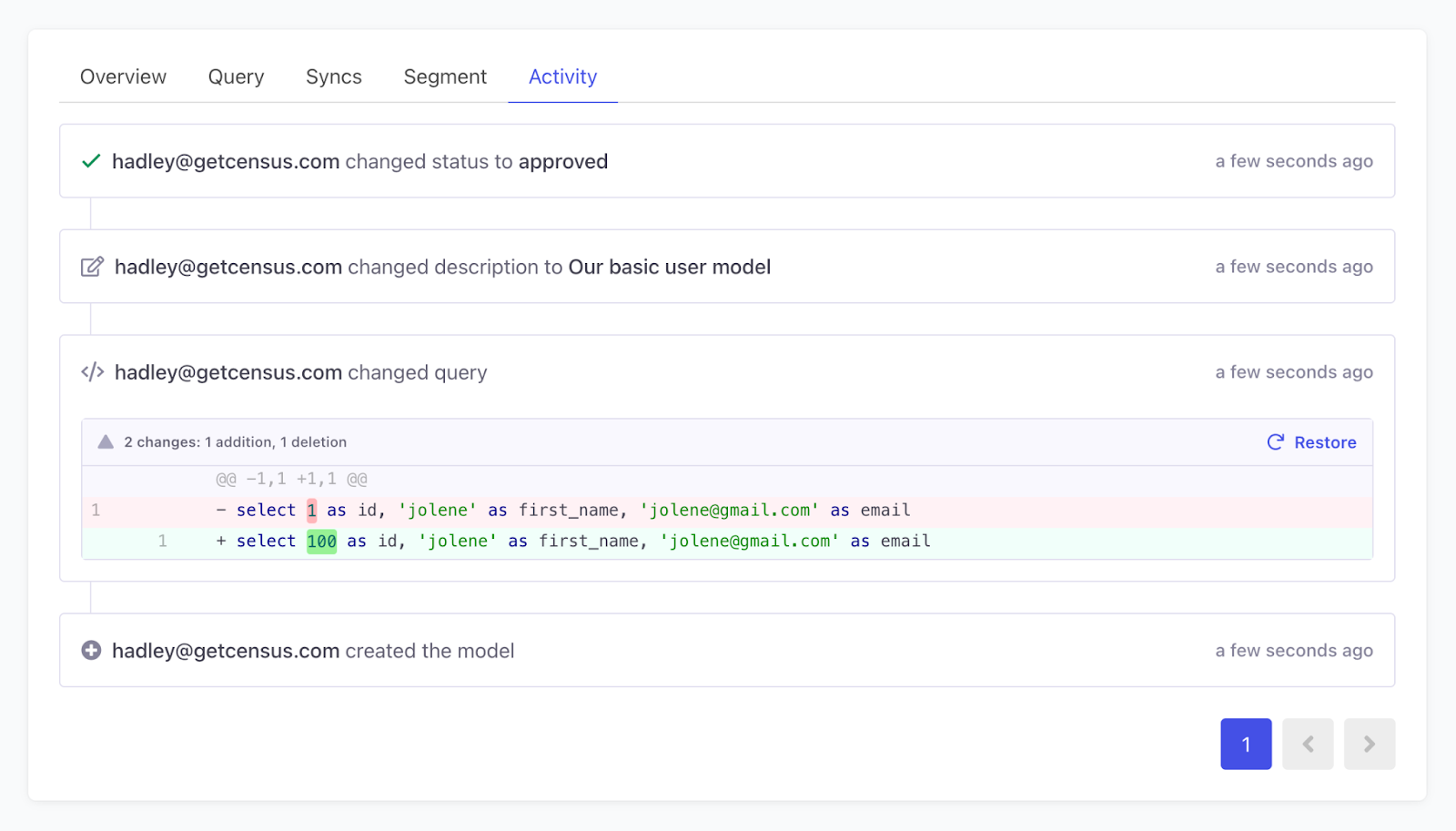
Maybe your Census models aren’t as crucial as Jack’s decisions in Lost (or maybe they are?)
Either way, Census customers will be happy to know that we’ve made significant improvements to the Model Activity tab. You can now see a detailed log of specific changes to each model, as well as who made those changes. We’re giving you increased transparency into the models that power your critical business workflows, encouraging more visibility and collaboration.
Now, for Census SQL Models you’re able to see a log of changes (approval, rename, etc.) in the Activity tab, in addition to which user made each change. Admin and editor roles can restore a SQL model to a previous query state!

For models created through a dbt or Looker integration, because they’re not directly managed by Census, you won’t be able to see query changes. However, you can see when a model is approved or unapproved, and when the name or description changes.
Even better, these model history logs are available not only for future changes, but also for past changes! We’ve found activity history for models that are over 3 years old 🤯
Any questions or feedback? Reach out to support@getcensus.com - we love hearing from you!

















